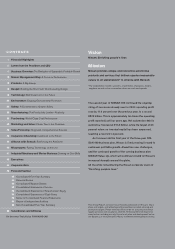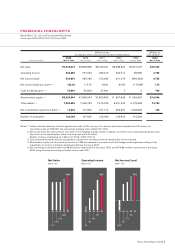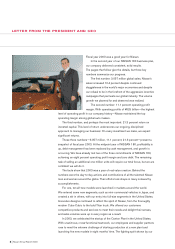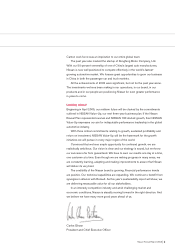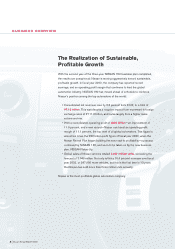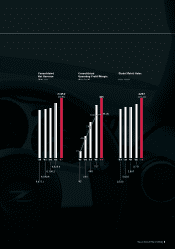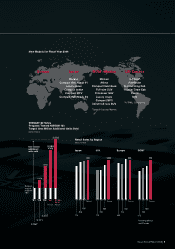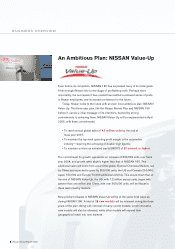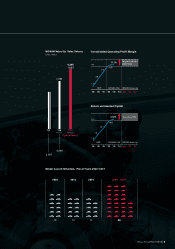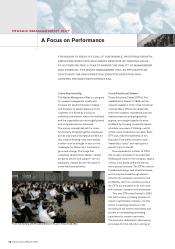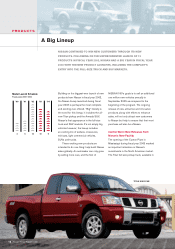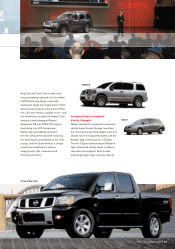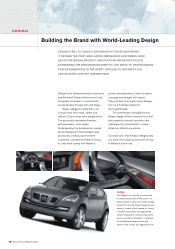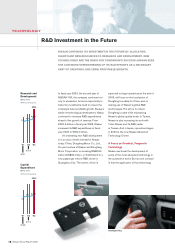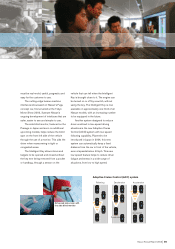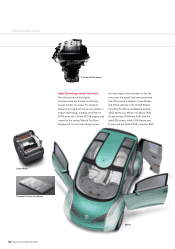Nissan 2004 Annual Report Download - page 12
Download and view the complete annual report
Please find page 12 of the 2004 Nissan annual report below. You can navigate through the pages in the report by either clicking on the pages listed below, or by using the keyword search tool below to find specific information within the annual report.
Nissan Annual Report 2003
10
Cross Functionality
The Nissan Management Way is a program
to increase management quality and
increase the speed of decision making—
and therefore to speed response to the
customer. It is driven by a focus on
individual commitment, where the individual
and the organization are more tightly joined
and competencies are enhanced.
The primary concept behind it is cross-
functionality, bringing together employees
across corporate and physical borders so
that creative thinking—and even healthy
conflict—can be brought to bear on the
challenges for Nissan as it continues to
grow and change. The things that
customers demand from Nissan—quality
products, service and support—are not
separately created, but are the result of
cross-functional activities.
Cross-Functional Teams
Cross-Functional Teams (CFTs), first
established at Nissan in 1999, are the
clearest realization of the cross-functional
concept. Many different professionals
within the company, representing various
business sections and geographical
regions, are brought together to solve
problems by focusing on specific issues,
introduce new ways of thinking—and to
rethink current business processes. Each
CFT was under the leadership of two
Executive Committee members, each
headed by a “pilot,” and each given a
specific topic to handle.
Now expanded to include 14 CFTs,
this concept continues to provide fresh
thinking and vision for the company. Issues
of time, cost, quality and profit also all
move across functions. The CFTs continue
to address strategic and structural issues,
and to propose breakthrough ideas to
enhance the company’s operations and
profitability. And it is a positive process:
the CFTs are entrusted to do their work
with a sense of passion and enthusiasm.
Two new CFTs were formed in 2003.
The first focuses on finding solutions to
ensure a genderless company, one that
will be increasingly attractive in the
recruiting of top women employees, and
provide an outstanding purchasing
experience for women customers.
The second is dedicated to discovering
processes for time reduction, aiming at
Town hall meeting with President Ghosn at Nissan’s Tokyo head office
FOR NISSAN TO REACH ITS GOAL OF SUSTAINABLE, PROFITABLE GROWTH,
EMPLOYEES MUST HAVE AN ULTIMATE OBJECTIVE OF CREATING VALUE.
TO ACCOMPLISH THIS, A PLAN TO ENSURE THE QUALITY OF MANAGEMENT
WAS ESSENTIAL: THE NISSAN MANAGEMENT WAY. AN EFFICIENT PLAN
THAT POINTS THE RIGHT DIRECTION; EFFECTIVE EXECUTION THAT
ACHIEVES THE OBJECTIVES WITHOUT FAIL.
NISSAN MANAGEMENT WAY
A Focus on Performance


